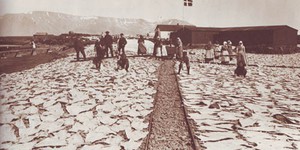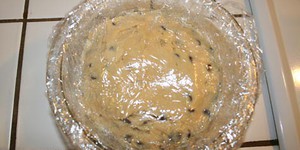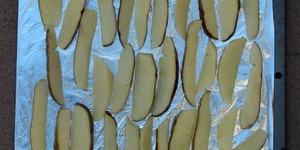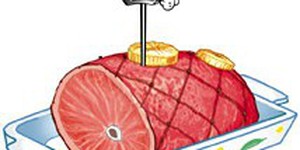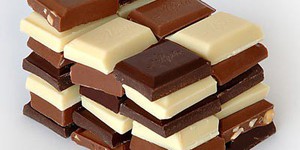Others Like “The Effect of Roasting on Color, Flavor, and Texture of Peanut Butter” (top 20 results)
|
Caramelization is the name of the cooking process that occurs as sugar is heated and the molecules begin to break apart. But what happens to the sugar as it breaks apart? And what do the physical changes mean for the flavor of the sugar? Using the Internet or cookbooks, read up on the chemistry of caramelization, then head to the kitchen with an adult to caramelize your own batch of sugar. With an adult's help, dissolve 1 1/3 cups of sugar in 2/3 cup of water. Heat the mixture in a pan over…
Read more
It's the bottom of the ninth, and you've spent a great afternoon at the ball game with a hotdog, a soda, and an ice cream in hand, but I'll bet you're not thinking about how many crops went into those classic baseball snacks. Sure, the bun contains wheat, but did you know that the hotdog might contain wheat, too? And soybeans may have been used to give that ice cream its perfectly smooth texture, while corn was likely used to sweeten the entire meal! Crops can be changed and added to processed…
Read more
Have you ever bitten in to a cookie and thought, "this is the best cookie in the whole wide world!"? Was it one you made at home? In this science fair project, discover if you can perfect the taste of your favorite cookie right in your own kitchen!
Read more
Who doesn't love soaking up the last bit of gravy on Thanksgiving? Or dipping a crusty cube of bread into a cheese fondue? Or scooping up the thick juices from a fruit pie? Sauces make eating a joy! They provide concentrated flavor in a thickened liquid form, with a pleasing texture and consistency that carries or compliments the flavor of the rest of the food. No matter if they're salty, spicy, savory, or sweet, sauces make foods richer and more special.
There are many ways to thicken sauces,…
Read more
Have you ever bitten into a slice of bread only to find that it no longer seems fresh? Instead, it has the firm, undesirable texture that comes about when the bread is going stale. Chemically, what happens during the staling process? Can it be reversed (at least temporarily)? Do some background research to answer these questions and then apply those answers to one (or more) of the following experiments to find the optimal state to keep your bread fresh.
Experiment 1: What Temperature Keeps…
Read more
Apple pie is one of America's traditional desserts. It can be enjoyed on its own or with a scoop of vanilla ice cream. The cool sweetness of the ice cream combines with the warm apples and flaky pastry to create a taste sensation. However, if the pastry that surrounds the apples is heavy or chewy then that can really affect how much you enjoy this treat. But how do you make a pastry that is light and flaky? In this cooking and food science fair project, you will find out by experimenting with…
Read more
The first bite of a fresh-picked apple, the crunch of morning toast, the deep cut into rich, flaky layers of baklava, the pleasing snap of a chip. Besides being delicious, what do these foods have in common? They're crisp. They have a brittleness that causes them to shatter in your mouth when you first bite into them. It's a sensation that many people enjoy. Making potatoes crispy requires some extra cooking steps, as you'll discover in this food science project, but the results are well worth…
Read more
Yogurt is a very versatile dairy product. It's yummy eaten straight from the container, it is good for your digestive system, and it can be used in several ways for cooking. There is historical evidence that yogurt-making developed 4,500 years ago! Humans depended on yogurt-making as a way to preserve milk. Yogurt is the result of bacterial fermentation of milk. In fermentation, the bacteria consume the milk sugar, lactose, and produce lactic acid. The end-product is a thick, creamy, and tangy…
Read more
"What? My food needs some standing time? How can food stand? I don't see any legs on those baked potatoes!" Whether you're using a traditional oven or a microwave, standing time is an important concept in cooking or baking. When you remove a food from an oven or a microwave, the food retains heat and continues to cook for several minutes after it has been removed from the heat source. This process of the food continuing to cook, using the retained heat in the food itself, is called carryover…
Read more
Nut clusters, chocolate-dipped candies, and chocolate-dipped strawberries are just some of the delicious goodies that have a thin, rich layer of chocolate wrapped around them. But how do pastry and candy chefs make these delectable treats? The first step is to melt and temper chocolate. Tempering is a process in which the cocoa butter in chocolate is hardened into a specific crystalline pattern. When the cocoa butter molecules are in this pattern, the chocolate is shiny and breaks with a sharp…
Read more
|
Explore Our Science Videos
How To Build a Rube Goldberg Machine
Build a Simple Steerable Robot
Slow Motion Craters - STEM Activity



